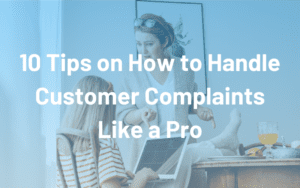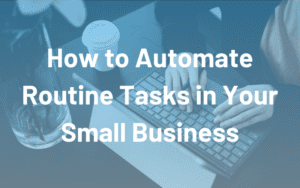A well-designed sales funnel is essential for converting prospects into customers and driving business growth. A sales funnel guides potential customers through the buying process, from the initial awareness stage to the final purchase decision. In this blog, we’ll walk you through the steps to create a sales funnel that works for your small business.
Understand Your Customer Journey
Before creating your sales funnel, you need to understand your customer journey. This involves mapping out the stages your customers go through, from discovering your business to making a purchase. Typically, the customer journey includes four stages:
- Awareness: The customer becomes aware of your business or product.
- Interest: The customer shows interest and seeks more information.
- Decision: The customer evaluates options and considers making a purchase.
- Action: The customer makes the purchase.
Understanding these stages will help you design a funnel that meets your customers’ needs at each step of their journey.
Create High-Quality Content for Each Stage
Content is a crucial part of your sales funnel. Different types of content work best at different stages of the funnel. Here’s how to approach content creation for each stage:
- Awareness Stage: At the top of the funnel, focus on creating content that introduces your business and attracts potential customers. This could include blog posts, social media content, videos, and infographics that provide value and establish your expertise.
- Interest Stage: In the middle of the funnel, provide more in-depth content that addresses your customers’ pain points. This could include case studies, webinars, eBooks, or email newsletters that offer solutions to their problems.
- Decision Stage: As customers move closer to making a decision, offer content that highlights the benefits of your product or service. This could include product demos, testimonials, comparison guides, or free trials to help them make an informed choice.
- Action Stage: At the bottom of the funnel, focus on converting leads into customers. Provide clear calls to action (CTAs) and make the purchasing process as smooth as possible. Offer promotions, discounts, or limited-time offers to encourage action.
Capture Leads with Effective Opt-Ins
To build a sales funnel that works, you need to capture leads at each stage of the funnel. Offer something of value in exchange for your prospects’ contact information, such as a free eBook, a discount code, or a webinar registration. Use opt-in forms on your website, landing pages, and social media to gather email addresses and other relevant information.
Make sure your opt-ins are compelling and easy to understand. Clearly communicate the benefits of signing up and ensure that your forms are user-friendly.
Nurture Leads with Email Marketing
Once you’ve captured leads, the next step is to nurture them through the funnel with email marketing. Send targeted, personalized emails that provide value and keep your prospects engaged. Segment your email list based on where your leads are in the funnel, and tailor your messages accordingly.
For example, send educational content to leads in the awareness stage, and product-focused emails to those in the decision stage. Include strong CTAs in your emails to guide your leads to the next step in the funnel.
Implement a Follow-Up System
A follow-up system is essential for keeping your leads moving through the funnel. Set up automated email sequences that trigger when a prospect takes a specific action, such as downloading an eBook or signing up for a webinar. Automated follow-ups ensure that no leads fall through the cracks and that your prospects receive timely, relevant communication.
Additionally, consider following up with phone calls or personalized messages for high-priority leads. A human touch can make a significant difference in converting leads into customers.
Use Analytics to Optimize Your Funnel
To create a sales funnel that truly works, you need to track and analyze its performance. Use analytics tools to monitor key metrics, such as conversion rates, click-through rates, and lead-to-customer ratios. Identify any bottlenecks in your funnel and make adjustments to improve its effectiveness.
For example, if you’re losing leads at the decision stage, consider tweaking your product messaging or offering additional incentives. Continuously test and optimize your funnel to ensure that it delivers the best results for your business.
Close the Sale with Clear Calls to Action
At the bottom of the funnel, it’s essential to have strong calls to action that guide your leads toward making a purchase. Make it easy for customers to take the final step by offering clear, compelling CTAs. Ensure that your checkout process is smooth and user-friendly, with minimal distractions.
Consider offering limited-time promotions, free shipping, or bonuses to encourage conversions. By making the final decision as attractive and straightforward as possible, you can increase your chances of closing the sale.
Build Customer Loyalty with Post-Sale Follow-Up
Your sales funnel doesn’t end with the purchase. After the sale, continue to nurture your customers to build loyalty and encourage repeat business. Send follow-up emails thanking them for their purchase and offering additional support or recommendations.
Consider implementing a loyalty program or offering exclusive discounts to repeat customers. By maintaining a positive relationship with your customers, you can turn one-time buyers into long-term advocates for your brand.
Creating a sales funnel that works for your small business requires a deep understanding of your customer journey, high-quality content, and a systematic approach to lead nurturing and conversion. By following these steps, you can design a funnel that effectively guides prospects through the buying process and drives business growth.



